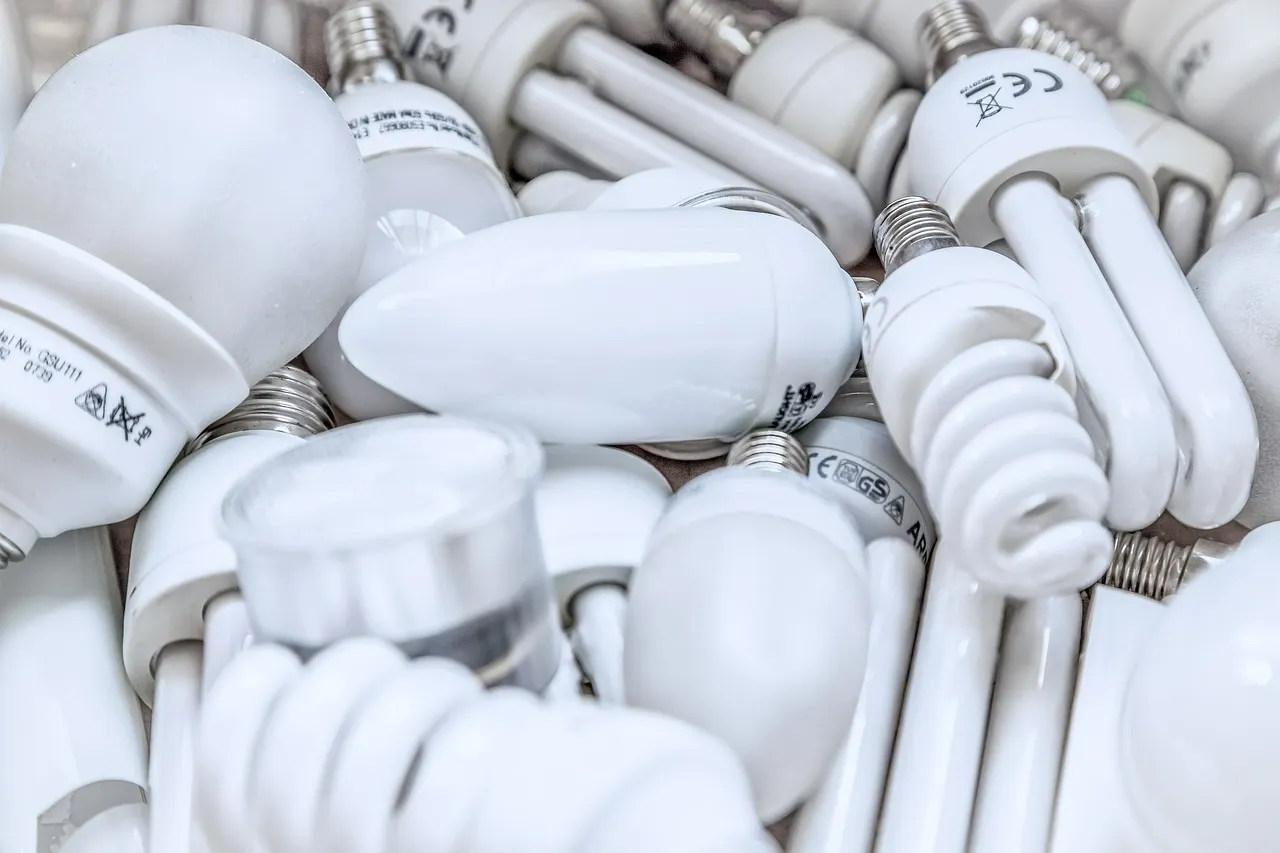Illuminating the Path: How to Dispose of Light Bulbs Responsibly
Americans throw out over 600 million fluorescent bulbs every year, and the majority end up in landfills. And obviously, this isn’t the right way how to dispose of light bulbs. So, getting familiar with junk removal tips is helpful in bulb disposal. Adding to this, different bulbs have different disposal methods, and some are hazardous if not handled carefully.
- CFLs (Compact Fluorescent Lamps): Have about 4 milligrams of mercury, a toxin that will contaminate air, water, and soil if the bulb is crushed in a landfill. Even small quantities can be harmful to wildlife and human health.
- Fluorescent Tubes: Like CFLs, these contain mercury and must go to a hazardous waste site or special recycler.
- LEDs and incandescents: Incandescents and LEDs are mercury-free but contain materials, like copper, aluminum, and glass, that can be recycled and should not be wasted.
However, most people have no idea such regulations exist, and disposal isn't always convenient. But maybe that's changing now.
Get a Live Quote Now
Connect to a live representative and get a quote in real time for junk removal in your area.Table of Contents
- TL;DR
- The Hidden Environmental Impact of Light Bulb Disposal
- Innovative Recycling Technologies for Light Bulbs
- The Psychology of Light Bulb Disposal Behavior
- Legal and Regulatory Landscape of Light Bulb Disposal
- Unconventional Repurposing of Spent Light Bulbs
- The Role of Artificial Intelligence in Optimizing Light Bulb Recycling
- The Geopolitics of Light Bulb Disposal
TL;DR
- Improper light bulb disposal harms ecosystems and public health.
- CFLs and fluorescent tubes contain mercury and need special handling.
- LEDs are e-waste and should be recycled, not trashed.
- New tech like AI and blockchain is improving recycling systems.
- Community habits and social norms shape disposal behavior.
- Regulations vary, so always check local recycling guidelines.
- Creative reuse and repurposing can reduce waste.
- Grassroots efforts are key to driving sustainable change.
- Jiffy Junk makes light bulb disposal safe, simple, and eco-friendly.
The Hidden Environmental Impact of Light Bulb Disposal
The Hidden Environmental Cost of Tossing Light Bulbs
The real threat goes beyond landfill waste. It’s what leaks out when bulbs break, especially those with toxic materials.
CFLs, for example, contain mercury that can seep into soil and water. One bulb's worth of mercury is enough to pollute up to 6,000 gallons of water. When mercury enters water bodies, it becomes methylmercury, a neurotoxin that can poison wildlife and humans.
- LEDs typically contain traces of lead or arsenic
- Incandescents and halogens are not toxic, but they add to landfill waste
That’s why it’s so important to learn how to safely dispose of bulbs. And, why Jiffy Junk, how junk removal works, makes sure dangerous materials are handled correctly, rather than tossed in the trash.
That’s why knowing how to dispose of light bulbs safely is so important and why understanding how junk removal works can make a big difference. At Jiffy Junk, we don’t just haul things away; we make sure items like old bulbs, electronics, and other hazardous waste are handled responsibly, not dumped in the trash.
Mercury Contamination from CFLs
Compact Fluorescent Lamps (CFLs) are not hazardous. Yet, they contain about 4 milligrams of mercury, a toxic metal that is harmful even in very small amounts. Mercury vaporizes at room temperature when a bulb is broken, posing an inhalation risk, especially in closed spaces.
While 4 mg might sound tiny, mercury doesn’t just disappear. It builds up in ecosystems, contaminates water sources, and can damage the brain and nervous system, particularly in children and pregnant women.
If you're wondering how to dispose of fluorescent light tubes, you can contact Jiffy Junk, and we will ensure they're handled the right way.
Bioaccumulation in Aquatic Food Chains
When mercury in CFLs is exposed to water, it can do some very harmful things. Mercury will eventually seep into nearby water systems. There, it turns into methylmercury, a highly toxic substance that's considerably worse than the original element.
Methylmercury does not linger in the water. It gets absorbed by small aquatic organisms, then eaten by fish and continues climbing the food chain in a process called bioaccumulation. By the time it has moved to larger fish, like tuna or bass, the concentration of mercury can be dangerously high.
That’s why fish consumption advisories are often issued for children and pregnant women. Exposure to excessive mercury levels has been linked to developmental delays, neurological damage and memory loss.
If CFLs accumulate and aren’t disposed of properly, they can cause serious harm to the environment and human health. The contamination often starts in rivers and lakes and eventually makes its way up the food chain, ending up on our dinner plates.
Neurological Effects on Wildlife
The effects of mercury poisoning don't stop at the water's surface. Although aquatic life is generally the first to suffer, land animals, birds, and mammals are not immune either. Animals that are exposed to mercury in contaminated environments are often observed with altered behavior, reduced reproductive effectiveness, and even elevated death rates.
For example, in New England, studies have proven that loons that breed in polluted mercury environments lay fewer eggs, and their chicks have a higher chance of dying. The conclusion was that mercury, from industrial waste and discarded CFL light bulbs, affected the adult loons' feeding and breeding habits.
To track these dangers, scientists use "indicator species" like loons to measure mercury concentrations and overall ecosystem well-being. When wildlife gets hurt, it's often an indicator that greater environmental harm is already underway.
Electronic Waste from LED Bulbs
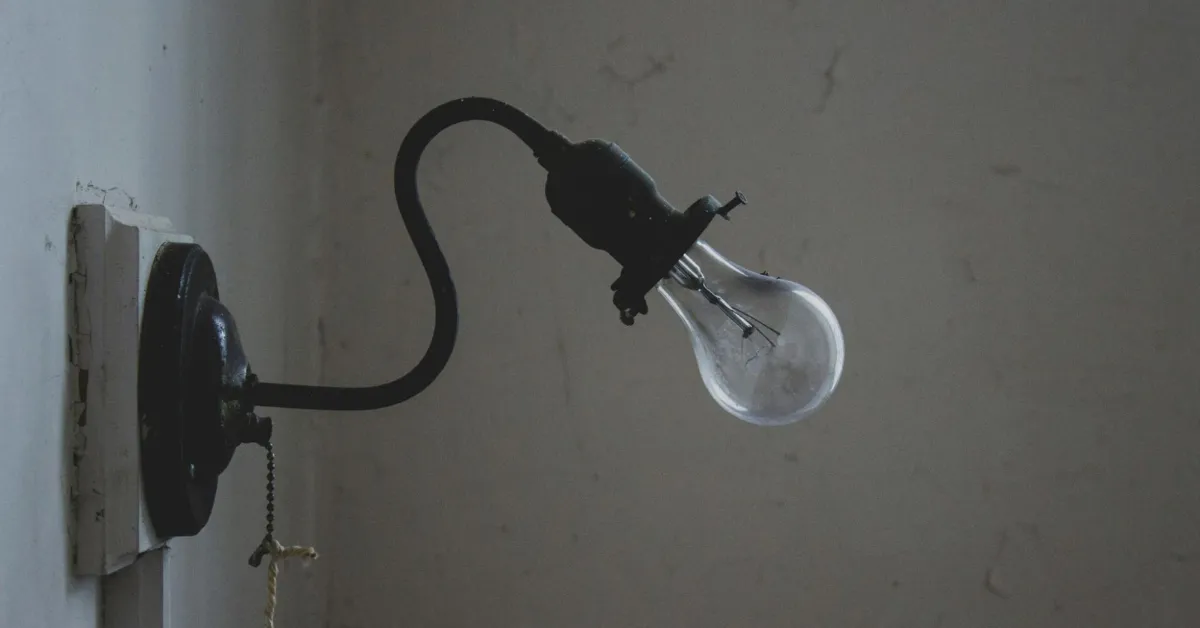
How to dispose of LED bulbs in an eco-friendly way
Source: unsplash.com
LED lights are the longest-lasting and cheapest lighting option, going between 25,000 and 50,000 hours. This is a far cry from CFLs, for example, which last between 6,000 and 15,000 hours.
However, rising consumption of LEDs has led to higher electronic waste (e-waste). Unlike incandescent light bulbs, LEDs do contain electronic parts such as circuit boards and semiconductors and even minute heavy metals such as lead and nickel. These qualify them as e-waste, which needs to be handled responsibly to prevent harming the environment.
Additionally, the real-life expectancy of an LED can be compromised depending on poor manufacturing or improper use, such as using non-dimmable LEDs with dimmer switches. Premature failure as a result means giving up the long-term benefits of using LED lighting.
To prevent this, one must know how to dispose of LED bulbs properly. E-waste recycling is offered at local recycling centers and electronics stores to ensure there is a recovery of valuable materials and a minimization of environmental impacts.
Rare Earth Element Depletion
Few are aware that LED bulbs incorporate rare earth materials like yttrium, europium, and terbium to produce color and functionality. These are valuable, wasted resources that cause environmental damage if not recycled. Mining these materials can lead to soil erosion, water pollution, and even nuclear waste.
Recycling LEDs can recover most of these rare earth elements, minimizing the need for toxic mining. Here's how it breaks down:
- Yttrium: Applied to phosphors for color. Both water and soil are polluted by mining.
- Europium: Used in red phosphors. Linked with radioactive waste.
- Terbium: Used in green phosphors. Mining leads to acid mine drainage.
- Recycling assists in recycling these components, reducing waste, and lessening the environmental toll of mining. This easy action is a significant sustainability factor.
Microplastic Pollution from LED Casings
The plastic components of LEDs' design often go unnoticed. Most LEDs commonly use polycarbonate or acrylic plastic as diffusers and heat sinks. Over time, they become weakened when exposed to environmental conditions such as sunlight or temperature changes. This may lead to the formation of microplastics, tiny particles causing growing plastic pollution.
Microplastics are particularly dangerous because they accumulate and absorb chemicals in the environment in which they are found, then potentially pass them on up the food chain once ingested by animals. Since they are such durable materials, microplastics possess the ability to stay active in the environment for years and add to cumulative pollution globally.
Innovative Recycling Technologies for Light Bulbs
With research penetrating the universe of light bulb waste management, they discovered that there is a universe of pioneering recycling technologies changing the industry. The technologies are allowing them to recycle various types of light bulbs more consistently and eco-friendlier.
New recycling technologies allow up to 95% of material from light bulbs to be recovered, ranging from materials like aluminum and copper to even using the rare earth elements used by LEDs. Yet it takes special processes for incandescent, CFLs, and LEDs due to their different constituent materials.
Light bulb recycling technologies are making improvements in efficiency, reducing waste, and conserving precious resources, making a very significant contribution towards environmental sustainability.
For the handy people, this video will help you understand the light bulb recycling and disposal process.
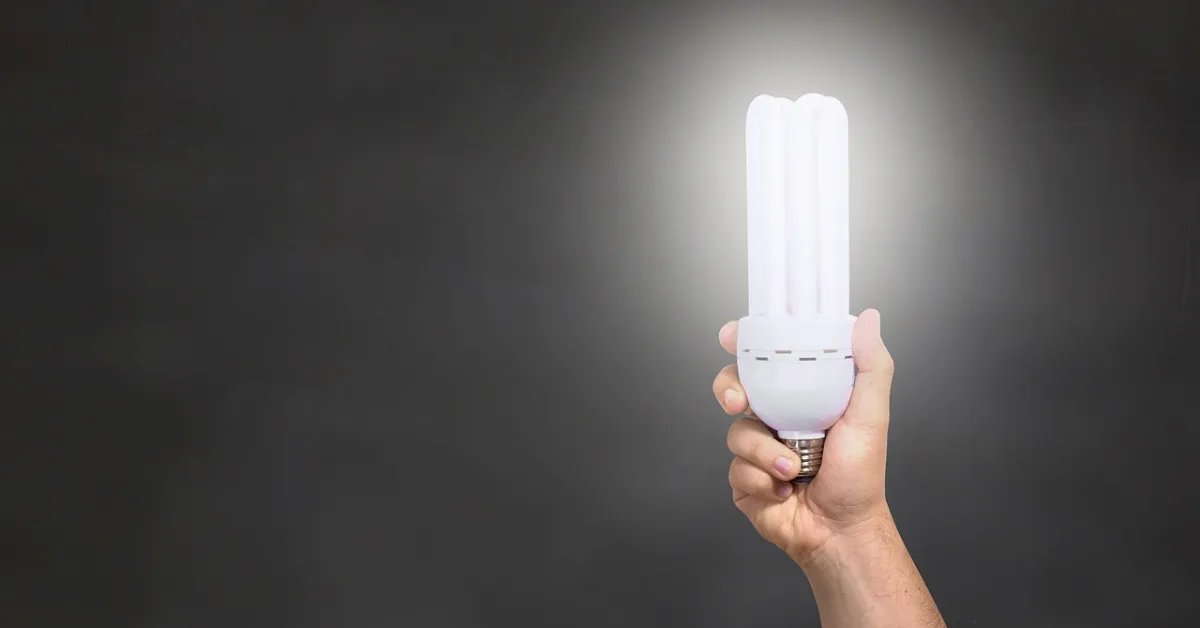
Learn more about how to dispose of light bulbs
Source: pixabay.com
Cryogenic Recycling for CFLs
Cryogenic recycling is a recently developed technology for recycling compact fluorescent lamps (CFLs), where very low temperatures are applied to achieve separation and material recovery. Cryogenic recycling involves the freezing of CFLs at approximately -120°C using liquid nitrogen, which prevents mercury inside from adhering to the glass and therefore prevents vaporization and its subsequent release to the environment. It has been found to reduce mercury emissions in recycling.
In Minnesota, Mercury Technologies Minnesota, Inc. (MTM) is a pioneering plant in recycling fluorescent lamps. It was established in 1992 and is the first-ever facility in the United States constructed specifically for recycling fluorescent lamps . It is still the oldest continually operating fluorescent lamp recycling company in the USA. The plant is certified by the Minnesota Pollution Control Agency to recycle mercury internally, where all procedures are performed in an environmentally sound way.
The use of cryogenic recycling technologies, like those demonstrated through the operations of MTM, is a substantial step towards safety in CFL recycling and efficiency. The reduction in mercury emissions, along with its increased processing, makes these technological advancements promote even more environmentally conducive waste management regimes, and protect environmental well-being.
Mercury Vapor Capture Systems
As scientists looked into the hazards of recycling compact fluorescent lamps (CFLs), there was a single hurdle that came first: mercury vapor. CFLs contain a small but toxic amount of mercury, which will have catastrophic health and ecological impacts if not treated properly. Accordingly, modern recycling facilities utilize state-of-the-art filtration techniques specifically designed to trap and seal mercury vapors.
Some plants go the extra mile using chemical conversion methods. These setups convert elemental mercury to more stable, less poisonous compounds in the recycling procedure, completely reducing the danger of airborne contamination.
To ensure these safety measures are effective, real-time vapor monitoring is often installed in recycling facilities. Such systems continuously track mercury levels, alerting workers if concentrations rise above safe levels.
Plasma Arc Recycling for LEDs
LEDs are hard to recycle since each light bulb holds a mix of materials: glass, metal, plastics, and semiconductors. Plasma arc technology is an intensive means to break these components down into reusable base elements.
Plasma torches with temperatures that are incredibly high are used to break down molecular bonds. The high heat transforms garbage into non-toxic slag and syngas and reduces landfilling needs.
Plasma arc systems can also process mixed waste streams and are, therefore, particularly well-suited to process the varying designs of LED bulbs. Furthermore, the technology lowers toxic emissions and makes it easier to recover rare substances like copper or indium.
While plasma arc recycling is used mostly on an industrial level, consumers' initial step is to discover how to dispose of LED bulbs.
Rare Earth Element Recovery
When we toss out old LED bulbs, we're not throwing away light, wasting precious and limited resources. Rare earth elements (REEs) like yttrium, europium, and terbium produce LEDs' color and brightness. Used bulbs can have these elements harvested from them, and it's not only a possibility; it's becoming crucial to the sustainable lighting future through 2 steps:
- Acid leaching: This step involves dipping crushed LED material into acid to melt the rare earths. It is one of a series of procedures known as hydrometallurgy that's frequently utilized within electronics recycling.
- Purification: After leaching, techniques like solvent extraction and ion exchange are used to extract the rare earths from the solution. With these techniques, the elements are separated from each other, purified from impurities, and concentrated into a usable form.
The result? Highly pure substances. These techniques have been successful in creating very pure rare earths, enough to recycle in making new LEDs and other electronic devices.
The Psychology of Light Bulb Disposal Behavior
When it comes to deciding how to dispose of light bulbs, most of us guess or do nothing. This behavior is a basic decision-making process that has been ingrained in our culture, rather than merely an act of laziness.
Studies in behavioral economics demonstrate that even if humans are aware of what they're "supposed" to do (like recycling), they usually won't do it if the action isn't convenient, regular, or emotionally rewarding. Just giving someone a brochure or threatening to tell them CFLs contain mercury doesn't cut it. Habits persist.
This is why modern recycling campaigns focus on nudges: minor design elements that make eco-friendly action the default or most convenient. For example, cities that placed bulb drop-offs at hardware stores realized better compliance rates as the act was embedded in the current routines.
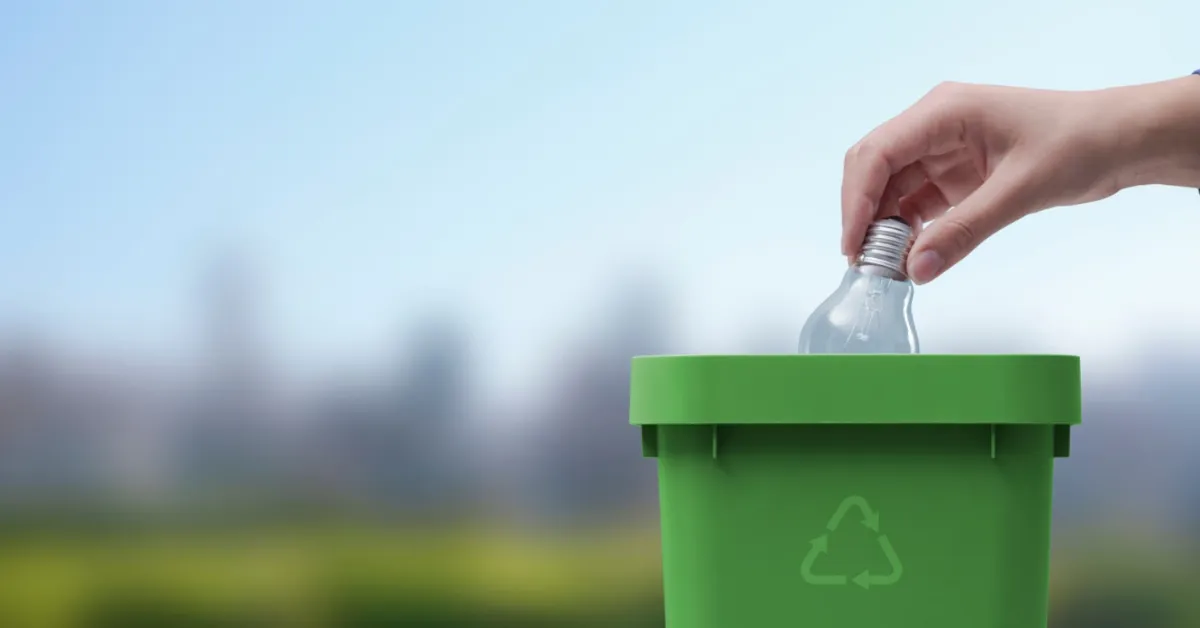
How to recycle light bulbs, regardless of psychological challenges.
Source: lowes.com
Cognitive Biases in Disposal Decision-Making
In disposing of light bulbs, our brains take shortcuts. There are biases that affect our decisions, and these biases make it harder for us to practice good disposal behavior.
Status Quo Bias
We prefer to stick with what we already have, even if it is not the best. That is known as status quo bias, which explains why so many are opposed to a change from throwing light bulbs in the trash to recycling them. It is work to break a habit, and most people are content with what they already know.
Present Bias
Present bias occurs when we choose short-term gain over long-term benefits. In light bulb disposal, it is much easier to get rid of a bulb than to find an official recycling drop-off. Disposal convenience now outweighs future environmental gain.
Optimism Bias
Individuals also suffer from optimism bias, in which they underestimate the harm of their own actions. Everyone is not made aware of just how much havoc improper disposal of light bulbs will wreak, such as mercury poisoning from CFLs. They find that the bad effect will not be too intense or affect them directly.
The "Out of Sight, Out of Mind" Effect
The largest problem with encouraging responsible light bulb disposal is the fact that people tend to overlook problems they can't see. If we are unable to see the effects of our actions, we won't care about the effects. Not seeing a problem can cause a careless approach to disposal, and this is called Psychological Distance.
One of the ways of closing this gap is through the use of visualization techniques. By showing the environmental damage caused by unrestrained dumping, like toxic mercury leaking into the soil, people can better comprehend the repercussions.
Real-time feedback can also be used. For instance, providing immediate information on the various ways an individual's recycling efforts help the environment is a means of encouraging good disposal behavior. Informing people how their actions make a difference immediately can help make them more favorable towards sustainable action.
Overcoming the Effort-Reward Imbalance
It is more effort to recycle light bulbs properly than to simply throw them away, and that extra effort is too often a barrier. But with the use of behavioral insights and intelligent design, neighborhoods can make sustainable behaviors easier and more appealing.
Behavioral economics shows how small reminders, or nudges, have a significant effect on decisions. For example, reminders that give eye contact pictures and sorting pointers have been found to reduce recycling errors by 7 percentage points.
Game-based engagement by recycling is also a powerful tool. Rewarding people for recycling properly based on points that enable them to access discounts or offers. This technique has increased rates of recycling as much as 20% across various U.S. communities.
Social Norms and Peer Influence
Social behavior is significant in shaping individual decisions to recycle bulbs. Descriptive norms, what people see other people doing, are frequently more successful at directing behavior than injunctive norms, or what people know they should do. This distinction is presented in the Focus Theory of Normative Conduct, which highlights the strength of observed behavior in guiding individual behavior.
For instance, in one study, hotel guests were more likely to reuse towels if they were informed that the majority of previous guests reused towels, showing the strength of appealing to descriptive norms.
To leverage these social forces, Community-Based Social Marketing (CBSM) utilizes tools such as public commitments and social diffusion to achieve sustainable behavior. Doug McKenzie-Mohr's study on CBSM illustrates how these tools can successfully change disposal behavior by increasing the visibility and social acceptability of sustainable actions (books.google.com).
Retail initiatives also facilitate the promotion of proper disposal behaviors. Home Depot, for instance, offers a national CFL bulb recycling program through customer drop-off locations. Lowe's retailers also accept CFLs for recycling, further supporting proper disposal behavior.
The Role of Local Champions
Community leaders and influencers can be strong agents of change in promoting the recycling of light bulbs by others. They are respected voices and possess local knowledge, making them well-placed to promote certain behaviors when most needed.
- Opinion Leaders: Teachers, store owners, or local activists are usually early adopters themselves who convince others to feel comfortable embracing new habits like proper disposal of bulbs. They can motivate others by example.
- Peer-to-peer Education Programs: Educated neighbors pass on wisdom, typically more powerful than institutional efforts. They establish credibility, especially among multicultural people.
- Local Leaders: They also offer site-specific solutions. In one neighborhood, that could mean organizing group drop-offs; in another, it could mean sharing information in neighborhood chatter. Supporting these leaders is a smart, scalable strategy to improve appropriate disposal practices.
Legal and Regulatory Landscape of Light Bulb Disposal
Figuring out how to dispose of light bulbs safely can be confusing, especially because the laws aren’t the same everywhere. Regulations often differ between commercial and residential waste, which means that businesses might have more legal obligations than the average household. In many places, commercial properties must follow stricter procedures or face penalties, while residential users may not even be aware that disposal rules exist.
International Variations in Disposal Regulations
Some local governments offer well-organized recycling programs and monitor compliance, but others provide little guidance or enforcement. That inconsistency leaves both individuals and companies unsure about what’s actually required.
In the European Union, however, disposal rules are much clearer. The WEEE Directive (Waste Electrical and Electronic Equipment) mandates that companies handle light bulbs and other electronic waste responsibly. It sets strict standards for collecting, recycling, and reporting these items; a model that helps ensure light bulbs are safely recycled rather than ending up in landfills.
Cross-Border Challenges in E-Waste Management
The international trade in bulb waste is growing, raising environmental and regulatory concerns. The Basel Convention controls the transboundary movement of hazardous wastes, such as mercury-lamp containing bulbs, to prevent dumping on developing nations.
Despite laws, electronic waste smuggling remains a widespread issue. Up to 90% of the world's electronic waste, valued at nearly $19 billion annually, is sold or sent out illegally across the globe, according to the United Nations Environment Programme (UNEP). They include various electronic devices, for example, computers and mobile phones, which typically end up in developing countries without going through treatment or recycling procedures.
To improve traceability, blockchain technologies are an effective method for waste tracking. These frameworks provide reliable records tracing bulbs from final processing to disposal with reduced illegal diversion risk.
Extended Producer Responsibility (EPR) Programs
Extended Producer Responsibility (EPR) programs transfer the cost and administrative burden of product disposal to producers. It stimulates producers to design products with end-of-life in mind, thus making them more environmentally sustainable. The following are the major impacts:
- Financial Burden Shift: EPR initiatives assist in easing the financial burden on local governments by making producers pay to sponsor and fund the recycling of their goods. This has been effective in places like Maine, where municipalities have grappled with recycling expenses.
- Product Design Innovation: By having producers be responsible for the entire life cycle of their goods, EPR urges producers to develop simpler products with lower environmental impact that can be recycled easily. This action has urged design innovation in many industries.
- Increased Recycling Rates: EPR programs have been enhancing the recycling rates by holding manufacturers responsible for their products' end-of-life treatment. The responsibility encourages manufacturers to design products that are more recyclable and invest in efficient recycling plants.
So, how to dispose of incandescent light bulbs can vary depending on local regulations. EPR programs nudge innovations that facilitate simpler, greener disposal. By shifting the responsibility to manufacturers, the programs can reduce mismanagement in disposal and improve overall recycling performance.
Incentive Structures for Manufacturers
Extended Producer Responsibility (EPR) programs hold producers accountable for the whole lifecycle of their products, from production to disposal. They encourage producers to be green by incentivizing recyclability in the design of light bulbs. Key points to follow are:
- Modulated Fees for Recyclability: EPR programs incentivize manufacturers with lower fees for making products that are simpler to recycle, minimizing waste, and encouraging sustainability.
- Material Recovery Targets: Some programs have clear material recovery targets, which motivate manufacturers to recover valuable materials such as metals and rare earth materials from light bulbs.
- Collaborative Platforms for Cost Sharing: Some EPR programs enable producers to share the costs of recycling facilities, so recycling is available at a lower price to all manufacturers.
Unconventional Repurposing of Spent Light Bulbs
Other than regular recycling, old light bulbs, especially incandescent bulbs, can be upcycled creatively in sustainable ways that do not cause waste. For those wondering how to dispose of incandescent bulbs, upcycling is one green alternative. From making mini terrariums to oil lamps or ornaments, these are creative means where bulbs get a new purpose.
Home improvement enthusiasts usually share innovative ideas for repurposing bulbs and promoting waste diversion and responsible disposal measures. Most importantly, always be cautious when handling bulbs. There are no toxic materials in incandescent bulbs, but shards of glass can be dangerous.
Artistic Upcycling
Craftspeople and artists are turning old light bulbs into pieces of art. From incandescent to CFL, every type of bulb has interesting shapes and textures that inspire creativity. Also, some artists, for which safety measures and training are required use mercury-containing bulbs.
One upcycled light bulb art says a lot about consumption, recycling, and the environmental impact of light bulb disposal. Whether transformed into delicate jewelry, intricate sculpture, or green home decor, these works show us what can be done with what would otherwise be garbage.
If you’re feeling anxious about getting rid of your old mattress, it’s completely normal. But by educating yourself, gradually transitioning, focusing on the benefits, and knowing the steps about how to dispose of a mattress, you can make the process a lot easier.
Terrarium Creations
One of the more fascinating eco-art trends is recycling vintage incandescent bulbs into miniature terrariums. The unique shape and transparency of incandescent bulbs make them ideal vessels for tiny plants like mosses, succulents, or air plants.
To encourage plant vigor, it is necessary to sterilize the bulb's interior and ensure proper drainage using pebbles or charcoal. This kind of repurposing showcases creative reuse and offers a green way of getting rid of incandescent bulbs without placing them in landfills. Glass gardens cause beautiful, low-waste home accessories and promote mindful consumption.
Scientific and Educational Applications
Old light bulbs are being reused increasingly in classrooms to teach scientific concepts, rendering what would be rubbish into useful educational tools. Bulbs can be used to teach concepts such as electricity, refraction of light, and even vacuum, depending on the bulb type. The filament of an incandescent bulb can be used, for example, to teach students about resistance, or parts of an LED to teach about circuitry.
However, when getting bulbs, especially the ones containing mercury or glass, safety protocols are required. Recycling bulbs in this way not only enables practical learning but also promotes sustainability and resourcefulness in the classroom.
DIY Plasma Globes
Transforming CFLs into plasma demonstration devices for educational purposes is a genius method of upcycling poisonous waste for pedagogical use. This home DIY process is performed by gently taking apart the phosphor coating inside the bulb and resealing it using an inert gas like argon. With the resealed CFL plugged into a high-frequency, high-voltage power source, it creates the intense, glowing plasma effect.
These plasma globe projects are visible representations of the fundamental principles of central physics, including electromagnetic fields and ionized gases. While the project is interesting and interactive learning, it is important to follow strict safety guidelines since the project does include electrical parts and potential mercury contamination in CFLs.
The Role of Artificial Intelligence in Optimizing Light Bulb Recycling
AI and machine learning are bringing transformative improvements to how to dispose of light bulbs and manage their recycling. These technologies streamline every stage of the process, from smart collection systems that identify bulb types to robotic sorting mechanisms powered by computer vision.
Machine learning algorithms continue to evolve with each recycling cycle, adapting to new designs and materials in modern bulbs. By improving sorting accuracy and material recovery rates, AI not only boosts operational efficiency but also reduces environmental impact. This innovation points toward a smarter, more sustainable future in light bulb disposal and recycling.
Automated Sorting Systems
Computer vision and machine learning-based AI visual recognition technology is revolutionizing light bulb sorting at recycling facilities. The technology employs computer vision and machine learning to recognize and sort over 95% of the bulbs with improved accuracy, enhancing recycling efficiency.
AI software adapts to new bulb designs and materials, so the recycling process functions effectively even when product designs are modified. This technology increases throughput, conserves labor, and improves the quality of recovered materials.
For disposing of light bulbs, one has to look at their local recycling programs since various places and bulbs have different procedures for doing so. Proper disposal takes less toll on the environment.
Predictive Maintenance in Recycling Facilities
AI algorithms are transforming recycling plant operations by preventing equipment failures and automating processes. Machine learning algorithms translate sensor inputs into forecasting potential issues so interventions can happen at the proper moment and expensive downtime is kept to a minimum.
The systems also optimize energy consumption and material transfer, facilitating improved recycling efficiency. Predictive maintenance extends equipment life, ensuring the recycling process is smooth and efficient. AI is not just enhancing the operating efficiency but also enhancing sustainability in waste management.
Blockchain for Transparent Recycling Tracking
Blockchain technology is going to revolutionize the recycling of light bulbs by making processes transparent and accountable. It can create irrevocable records of the journey of every bulb through recycling and disposal, enabling end-to-end traceability.
Disposal norms can be enforced through the use of smart contracts to automatically ensure compliance, reducing the possibility of human error or non-adherence.
Payment systems for recycling programs can be improved and secured with distributed ledger technology. This approach will enhance the integrity of recycling operations and increase trust among the stakeholders.
Consumer Engagement through Smart Disposal
IoT-enabled disposal bins are transforming how we recycle light bulbs using technology and behavioral reinforcement. Sensors and optical scanning, built into the intelligent bin, allow it to identify and sort different types of bulbs accurately. Others have gamification features, awarding users points or incentives for regular and correct disposal. The real-time data gathered also helps municipalities optimize collection routes and schedules, improving operations and enhancing recycling activism among the public.
The Geopolitics of Light Bulb Disposal
Light bulb disposal falls under the global framework of environmental justice, international trade, and policy. International trade policies determine how recycled goods are transported across borders based on export control and resource nationalism. If waste is exported from one country without any controls, it can cause environmental damage in another.
These transnational interactions highlight the need for global concerted solutions and further public education about how to dispose of light bulbs appropriately, with consideration of their broader environmental influence.
For more insights on efficient waste management, explore our office clean-out guide, which offers valuable tips applicable to both residential and commercial settings.
Resource Nationalism and Rare Earth Elements
Countries with abundant rare earth deposits, mostly China, account for over 69% of global rare earth production and nearly 90% of processing capacity. This affects everything from export policy to price to access to materials used in LEDs.
However, the growing geopolitical tensions force countries to use new recycling technologies to strengthen their supply chains and protect themselves from reliance on domestic manufacturing. These changes highlight the importance of recycling in domestic and international policy.
Trade Wars and Recycling Technology Transfer
International tensions can undermine progress in recycling light bulbs. Intellectual property (IP) conflicts can delay global dissemination of innovative recycling techniques, limiting access in low- and middle-income countries.
Bans on essential recycling equipment, typically motivated by geopolitical tensions, also widen the technology gap. For example, recent U.S.–China tensions have restricted the availability of rare earth processing equipment vital to recycling an LED bulb.
Environmental Justice in Global Disposal Practices
Improper disposal of light bulbs does not affect all communities equally. In less developed countries, informal e-waste recycling processes, most commonly open-air burning or acid baths, subject workers and surrounding communities to mercury, lead, and other toxic chemicals found in bulbs.
These processes are typically unregulated, with serious health and environmental impacts. Also, the lack of legal recycling plants in these regions leads to discarded bulbs contaminating soil and water. Even globally, only 22.3% of the e-waste was collected and recycled in the proper way during 2022.
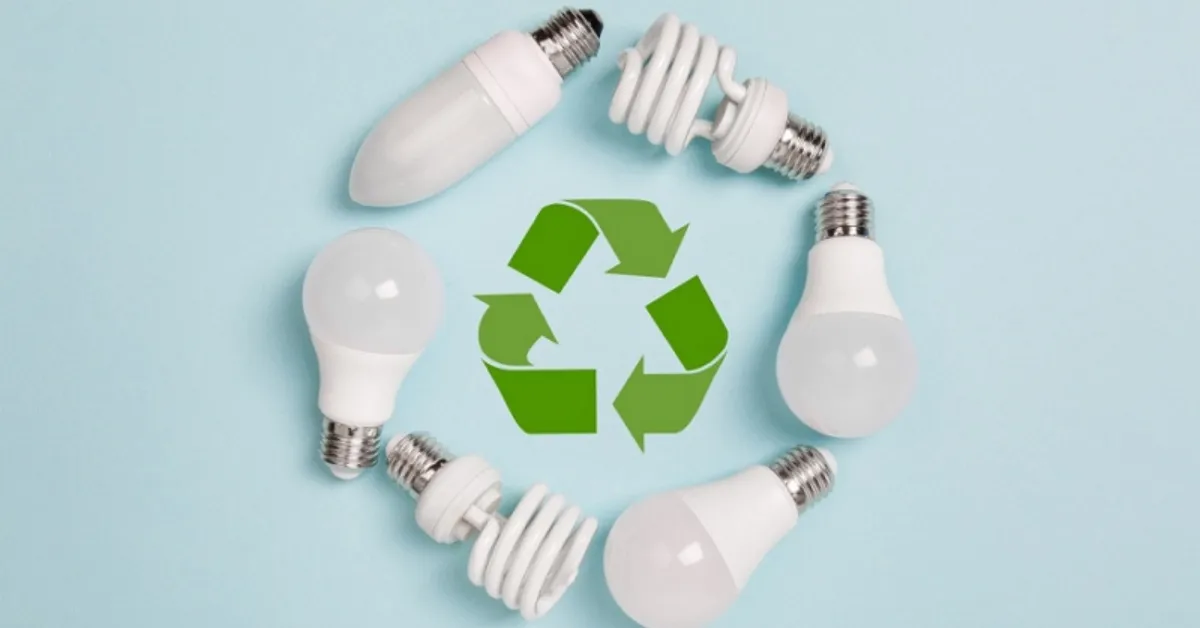
How to dispose of bulbs the green way.
Source: aidot.com
Grassroots Movements for Equitable Recycling
Grassroots efforts are forcing change in the disposal of light bulbs, particularly in disadvantaged communities, through the following:
- Community-Based Cooperatives: Communities benefit economically while enhancing disposal habits through recycling cooperatives.
- Participatory Design: Involving local communities in the recycling solution design makes systems culturally appropriate and responsive to regional challenges, leading to increased participation and better outcomes.
- Driving Policy Change: Grassroots movements are capable of leading policy change, which involves drastic changes to national and international recycling policies.
For additional advice on responsible waste disposal, check out our guide to house cleaning checklists, including tips on household trash disposal.
Learning Recap
It’s easy to overlook something as small as a light bulb, but when it comes to disposal, these everyday items pack an environmental punch. From mercury in CFLs to non-recyclable components in halogens, tossing bulbs in the trash can cause more harm than you think.
Here’s what to remember:
- Proper disposal of light bulbs protects the environment and conserves resources.
- Different bulbs must be disposed of differently based on their makeup.
- New technologies like AI and blockchain are making recycling more transparent.
- Local action is central to promoting sustainable recycling.
Still wondering how it all works? Check out our post on how junk removal services work, or explore why hiring hauling pros can save you time, energy, and stress.
Why Jiffy Junk?
At Jiffy Junk, our electronics recycling and junk removal services are built to handle the stuff most people don’t want to deal with, like old light bulbs, electronics, and other tricky materials. We keep toxic waste out of landfills and make recycling as easy as flipping a switch.
If you’re doing a full decluttering or clearing out a space, our attic, garage, or basement cleanouts can make disposal hassle-free. We understand that sometimes the cost of junk removal can be stressful, for that reason, we’ve opted to offer junk removal financing that’s truly revolutionary!
Need a cost estimate? Get quick insights with our guide on junk removal pricing.
More from Jiffy Junk
Robust Service
Interested in Getting Started?
Have a big cleanout job that needs to be done right away? Contact us today. We'll get rid of your junk in a jiffy!
Fast & Reliable
What Our Customers Are Saying
Thousands of satisfied customers across America have shared their Jiffy Junk Experience.
